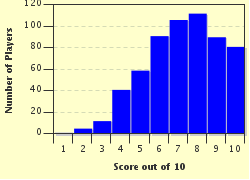Quiz Answer Key and Fun Facts
1. The sun is the centre of the solar system and is responsible, ultimately, for all life within the solar system. How does the sun create energy?
2. Because of Mars and Earth having similar rotational tilt angles, Mars has seasons not dissimilar to Earth's. What is the surface temperature range on Mars?
3. Mercury is the smallest planet of eight in the solar system but is the tenth largest body in the solar system. How can this be?
4. In lunar astronomy, what are 'maria'?
5. Mars has two moons, both small (between 10-25 km in diameter). They are named after characters in Greek mythology. What are their (related) names?
6. Saturn is known for its rings, but what is their average thickness?
7. Ganymede, one of 63 known moons orbiting Jupiter, is the largest moon in the solar system. With an approximate radius of 2630km how does this compare with the radius of Earth?
8. Uranus has several features in common with the other gas giant planets (Jupiter, Saturn and Neptune). Which one of the following characteristics is *NOT* the same for Uranus as the other three?
9. How does the planet Neptune appear, to the naked eye?
10. What do Ceres and Pluto have in common?
Source: Author
ClaudiaCat
This quiz was reviewed by FunTrivia editor
CellarDoor before going online.
Any errors found in FunTrivia content are routinely corrected through our feedback system.

